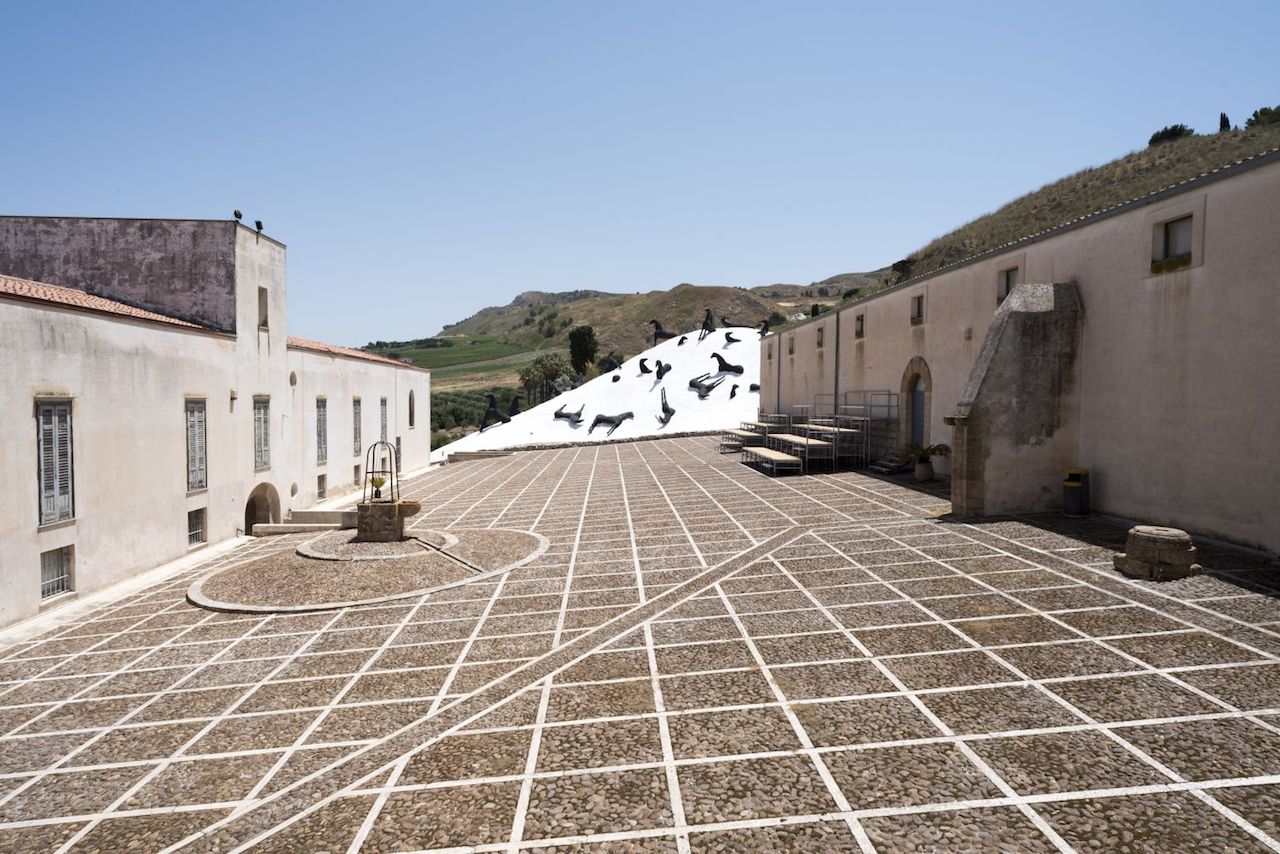
Baglio di Stefano in Gibellina, from recovery to restoration of a building of tradition
Gibellina over the years has been one of the most architecturally shaken cities, especially because of its complete rebuilding after the 1968 earthquake that razed the town. Some buildings, however, remained standing, just waiting to be renovated and considered for a new purpose. Stefano’s baglio in Gibellina is an example of the transformation and reuse of typical Sicilian architecture.
History Baglio
Baglio di Stefano, originally a masseria, is an architectural structure typical of Trapani’s agricultural landscape. Defined by a set of buildings dominated by the manor house it was placed between two courtyards. When it lost its original use, the beam fell into neglect and its condition worsened following the ’68 earthquake.
With the beginning of the 1980s, the municipality of Gibellina, led at the time by Mayor Ludovico Corrao, purchased it to take care of the restoration and transform it into the Headquarters of the
Orestiadi High Culture Foundation, promoter of numerous important cultural events and art workshops.
Despite the fact that much of the complex has been damaged and later restored, many original elements still remain, such as the stone furniture of the fountain or the seats.
The architects restored the original structures and rebuilt the missing parts. New additions are easily identified by the use of different materials and building systems.
The Baglio’s intended use changed from a masseria to a public building used for cultural activities, which led the designers to open the southeast side of the main courtyard to the countryside and turn it into an open-air exhibition space to hold cultural activities such as the Orestiadi festival. The international event that hosts musical, theatrical and visual arts events every year.
The central external part of the Baglio houses the large sculpture by Mimmo Paladino, called “Salt Mountain“, a pile of concrete, crushed stone and fiberglass on which are placed thirty wooden horses, very recurrent works in Paladino’s work, arranged in different positions. The work originated in 1990 as a set design for Friedrich Schiller’s The Bride of Messina, staged in Gibellina for the ’90 Oriestiadi.
The birth of the Museum
In ’96, the Museum of Mediterranean Textures was housed in the Baglio manor house, where various costumes, art objects, jewelry, textiles, ceramics and small utensils from peoples and cultures of the Mediterranean area were displayed. The barn was restored to later house the collection of the contemporary art museum; it appears as a vast room characterized by stone arches supporting the wooden roof. On display in this space are works by contemporary artists such as Mario Schifano, Carla Accardi, Pietro Consagra and Richard Long.
How to get to the Baglio?
The Baglio is always open to the public and offers several guided tours suitable for all ages. To get to the museum, one can start from Palermo in Trapani by taking the A29 highway towards Mazara del Vallo then exiting towards Salemi/Gibellina. If you wander around the Baglio around dinner time, there is a refreshment stand of typical Orestiadi Estate 0-km products and wines.
Giulia Nari
Top photo by Luca Savettiere





